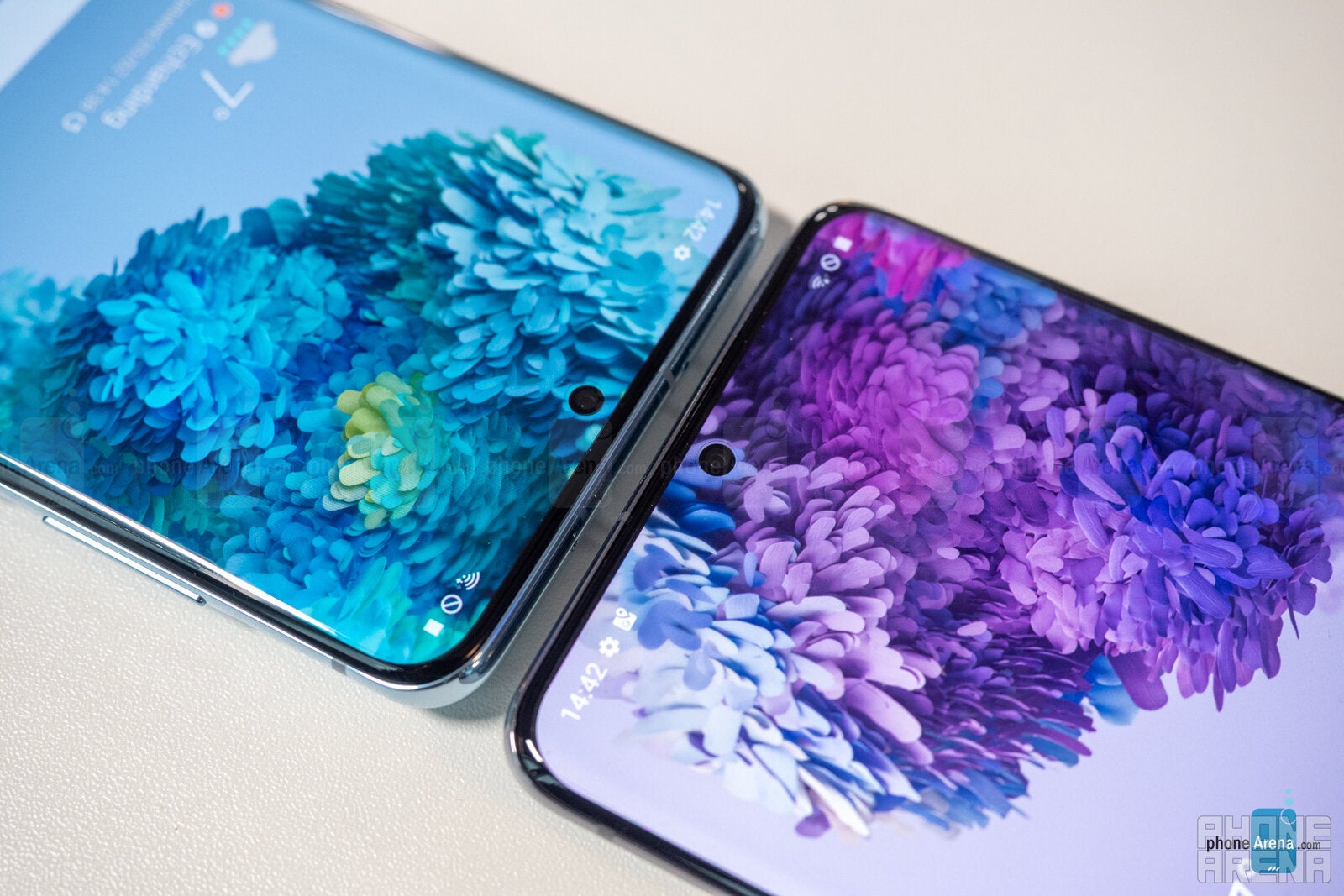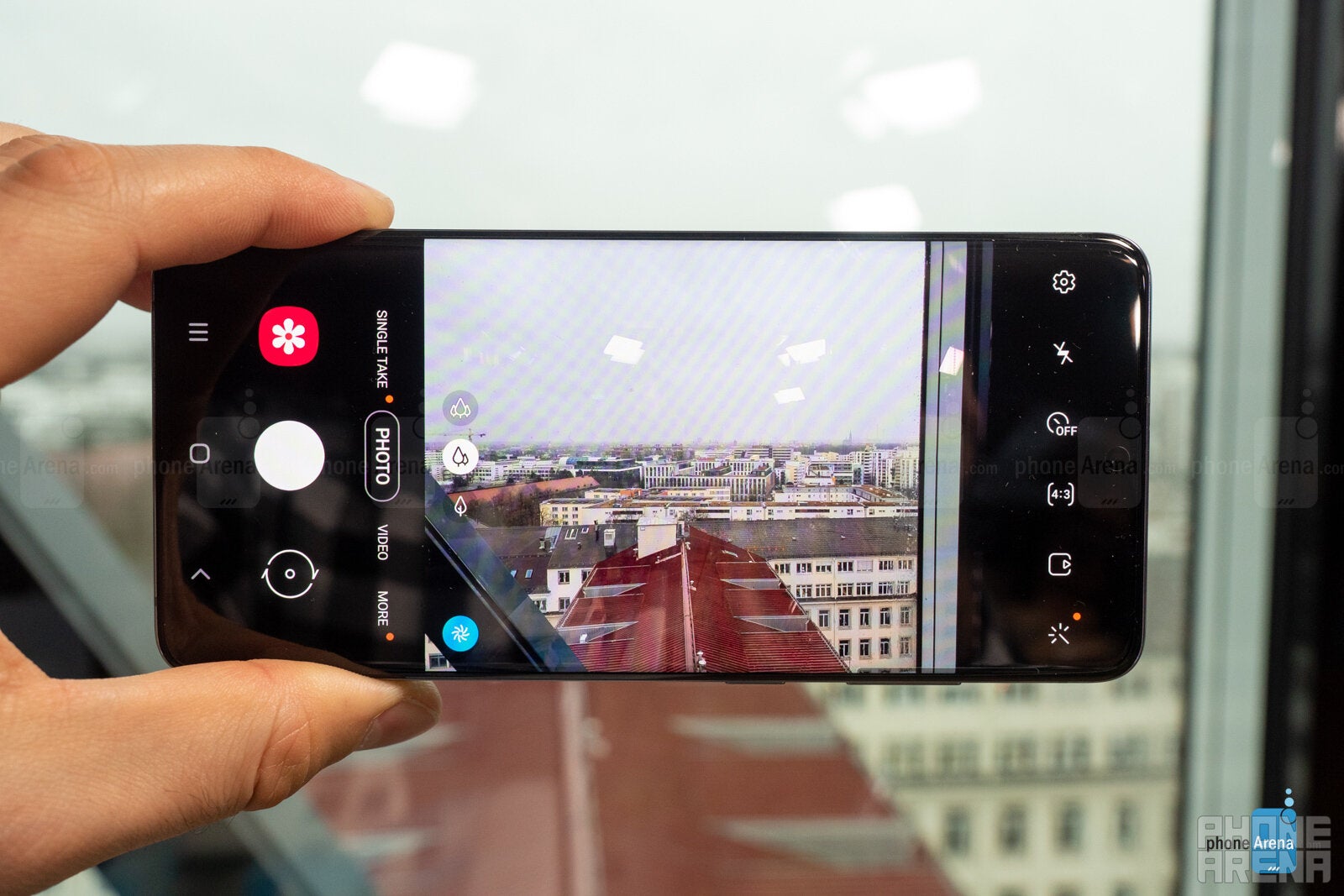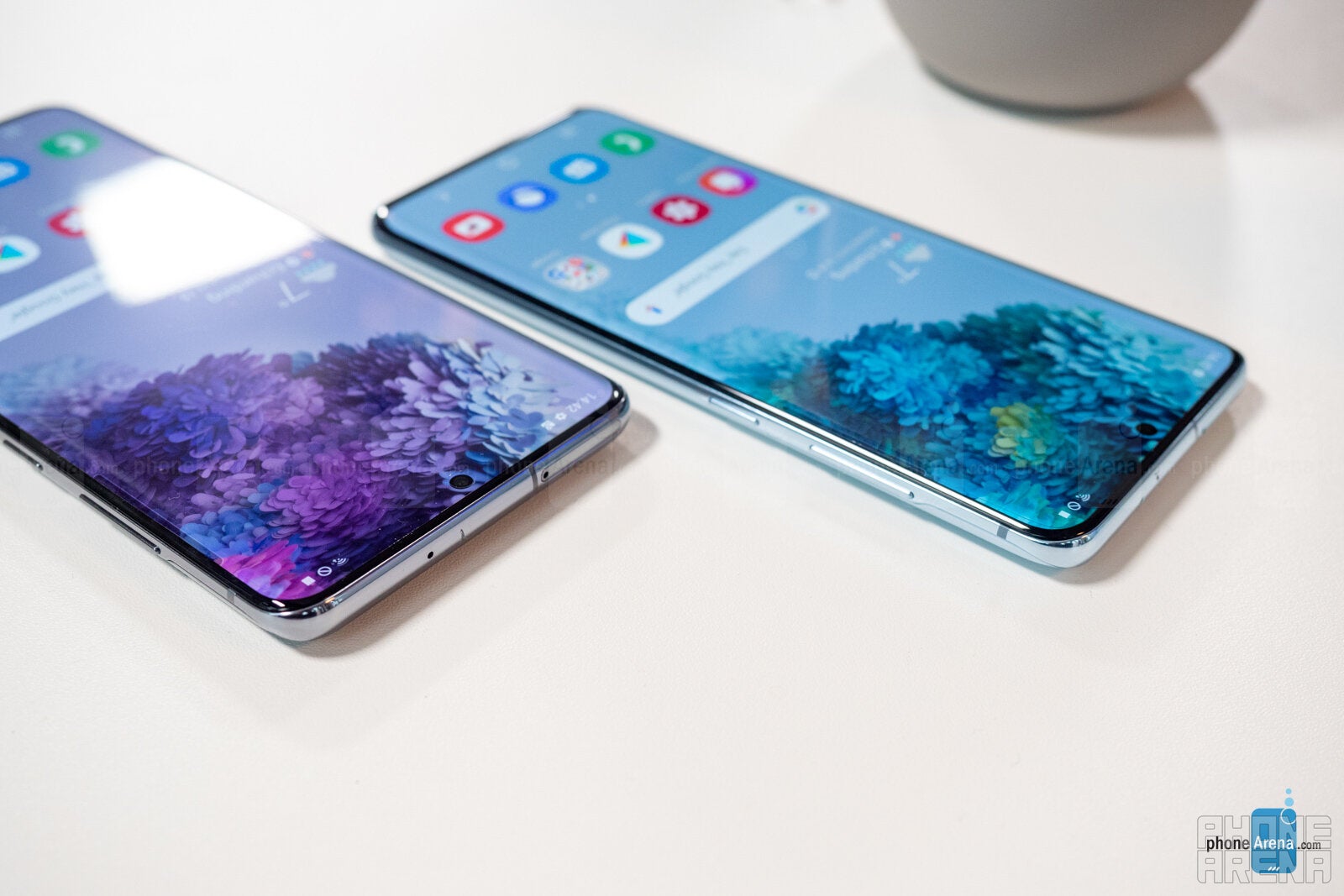Samsung Galaxy S20 and S20 Plus hands-on review: 5G for all

You might also want to read: Galaxy S20 Ultra hands-on
It's a big day for Samsung today: the company officially unveiled three new flagship Galaxy S20 models and while the Galaxy S20 Ultra is the biggest and baddest of them all, it's also the most expensive one and the phones that most people will be buying are the more compact yet still just as powerful Galaxy S20 and Galaxy S20 Plus.
We have had the chance to use both the S20 and the S20 Plus for a short while and while they are nothing as crazy as a foldable phone, we are impressed with the improvements that Samsung brings: 120-Hertz displays that look incredibly good in person, zoom cameras that allow you to capture photos at places like a football game where a phone has traditionally been useless as a camera, and then much bigger batteries, support for 5G and a beautifully refined design.
Galaxy S20 / S20 Plus top features:
- 120 Hertz display
- Zoom Cameras (up to 30X digital zoom)
- Larger batteries (4,000mAh on S20, 4,500mAh on S20 Plus)
- 5G support
- Snapdragon 865 chip
But then there are the little details and differences between them, so let's take a look at the phones, but first, here is a quick overview of the...
Galaxy S20 and S20+ Specs:
| Specs | Galaxy S20 | Galaxy S20 Plus | Galaxy S20 Ultra |
|---|---|---|---|
| Size & Weight | 151.7 x 69.7 x 7.9mm, 163g | 161.9 x 73.7 x 7.8mm, 186g | 166.9 x 76.0 x 8.8mm, 220g |
| Display | 6.2" 120Hz Dynamic AMOLED | 6.7" 120Hz Dynamic AMOLED | 6.9" 120Hz Dynamic AMOLED |
| Processor | Snapdragon 865 (USA) or Exynos 990 (Int'l) | Snapdragon 865 (USA) or Exynos 990 (Int'l) | Snapdragon 865 (USA) or Exynos 990 (Int'l) |
| RAM | 8GB / 12 GB | 8GB / 12 GB | 12GB / 16GB |
| Storage | 128GB / 512GB | 128GB / 512GB | 128GB / 256GB / 512GB |
| Battery | 4000 mAh | 4500 mAh | 5000 mAh |
| Cameras | |||
| Main Camera | 12MP, f/1.8 OIS | 12MP, f/1.8 OIS | 108MP, f/1.8 OIS |
| Secondary Cam | 12MP Ultra-wide, f/2.2 | 12MP Ultra-wide, f/2.2 | 12MP Ultra-wide, f/2.2 |
| Third Cam | 64MP Telephoto, f/2.0, OIS 3X Hybrid Optic Zoom | 64MP Telephoto, f/2.0, OIS 3X Hybrid Optic Zoom | 48MP Telephoto, f/3.5, OIS 10X Hybrid Optic Zoom |
| Fourth Cam | - | DepthVision (ToF) | DepthVision (ToF) |
| Front Cam | 10MP, f/2.2 | 10MP, f/2.2 | 40MP, f/2.2 |
Design and Size: S20 vs S20 Plus vs S20 Ultra
The Galaxy S20 and the S20 Plus look very similar, but there are two ways you can easily tell them apart: first, of course, is the physical size as the S20 is clearly the smaller phone, while the Plus one is bigger; second is while looking at the back, as the S20 Plus has a fourth camera and a slightly wider camera section. You might remember the super compact Galaxy S10e from last year, but that super compact size is no longer available as even the smaller Galaxy S20 is about the size of last year's S10, while the S20 Plus mirrors the size of last year's S10 Plus.
The phones are premium-made with a familiar glass and metal design that looks great when clean, but the glass gets stained with fingerprint smudges very easily.
What we love about these phones are the new colors: you have classic "Cosmic Gray" and "Cosmic Black" versions, but you also have a very jubilant pink model as well as a blue one. These are not just flat pink or blue colors, but they shift slightly to form an interesting gradient when light hits them.
And did we mention there is no headphone jack on the S20 and S20 Plus? You get a pair of USB-C headphones (the AKG-tuned kind) for free in the box, though.
And did we mention there is no headphone jack on the S20 and S20 Plus? You get a pair of USB-C headphones (the AKG-tuned kind) for free in the box, though.
120-Hertz Display: A game-changer

The S20 and the S20 Plus feature beautiful AMOLED screens with incredibly tiny bezels and they are very delicately tapered towards the edges, almost flat.
The screen sizes are 6.2 inches on the S20 and 6.7 inches on the S20 Plus, and both look great with vibrant colors, great viewing angles, these are truly impressive color panels. Both support up to a Quad HD resolution, but by default they are set at Full HD as it is considered the optimal balance between sharpness and battery life.
But the number one killer new feature is this: the 120 Hertz refresh rate. You can enable it in settings only when the phone is running at Full HD resolution and it makes everything appear to move so much faster and smoother. And no, there is no in-between 90-hertz option at all, in case you were wondering.
S20 and S20 Plus: All About the New Cameras

Samsung says that the primary new feature customers look for in a phone is a better camera and it's no surprise that it has gone all out with a big camera bump and an improved camera system.
While you don't have that new 108-megapixel camera sensor on the S20 or the S20 Plus (it's only reserved for the premium S20 Ultra model), you have the following:
- 12-megapixel main camera, f/1.8 aperture, OIS
- 12-megapixel ultra-wide, f/2.2
- 64-megapixel telephoto, f/2.0, OIS
- DepthVision (only on S20 Plus)
- 10-megapixel front camera
The biggest new feature is the Hybrid Optic Zoom that allows you to zoom 3X without a major loss in quality, and up to a 30 times using digital zoom.
Those 108 megapixels on the main camera, you can use them for full resolution photos, but by default the camera would combine 9 individual pixels into one to create 12-megapixel snaps.
New Camera Features

- Single Take: Single Take is available on all three S20 phones and allows you to just hold the camera shutter while the phone will shoot photos and videos with all of the cameras, and then magically pull out the best shots and moments in one album. How do you use it? Do something fun, jump or scream, be creative, and capture it. You will automatically get a short movie, a few GIF like funny animations, a bunch of stylized photos and a lot more in just one take. Samsung says it uses AI, but it’s a really great way to capture a moment and see it as if it was captured from a crowd of people everyone with their own unique view.
- Night Mode 2.0: Night Mode has also been improved and it now brings up more light and color in nearly pitch black situations. The improvement is quite big when compared to what is currently available on the Note 10 and Galaxy S10 series.
- Night Hyperlapse: You will have support for a Night Hyperlapse on both the S20 and the S20 Plus.
- 8K Video: 8K video is the leading new camera feature that provides a stunning amount of detail. It's not the default option (probably because 8K video also takes up a ton of space), but if you want that detail you can use it, plus in 8K video you are also able to capture 33-megapixel snaps while recording. You can share 8K videos to YouTube or beam them to a compatible 8K Samsung TV, and you also have the option to convert the footage to a lower resolution when you send it to friends.
- Improved Super Steady: The Super Steady option (you can enable it by tapping on the wavy hand icon in the camera interface) automatically gets rid of noise and jerkiness in your videos and it's great when you are trying to film something sporty or active where you have to walk or even run with the camera. Samsung says it has used both AI and hardware improvements for this. Keep in mind that Super Steady uses the ultra wide camera with a significant crop, and not the main camera, so it might not be the best fit if you are shooting videos in low light.
- Pro Mode for Video: Just what it sounds like, Pro Mode for video gives you manual control over things like shutter speed and ISO, so you can adjust the brightness of the video much like you can on a DSLR camera.
Processor, 5G Connectivity and Storage
All three Galaxy S20 phones will come with the new Snapdragon 865 chip in the United States, while most of the rest of the world will get them powered by the Samsung-made Exynos 990 chip instead.
5G connectivity is also available optionally on all three models, but keep in mind that some markets where there is no 5G network yet are likely to get a 4G only version of the phones that will also help Samsung cut the price for those countries.
If you live in a country with a 5G network, the S20 models on sale will support both mmWave technology (extremely limited range, but record beating speeds) and Sub6 bands (wide coverage, slower speeds than mmWave), so it will make the best of all 5G networks.
And in terms of storage, the base version of the S20 and the Plus features 128GB of on-board storage, and both phones also support expandable storage via microSD cards.
Battery and Charging

The Galaxy S20 and the S20 Plus will both bring huge improvements to battery sizes with a 4,000mAh battery on the S20 and a 4500mAh battery on the Plus model. This easily beats many competitors and holds the promise that both these phones will be able to provide 120Hz displays and 5G networks without sacrificing battery life.
The S20 and the Plus will also support wireless charging with faster speeds than what we used to have on the S10 series.
Price and Release Date
You can pre-order the Galaxy S20 and the S20 Plus starting February 20 on T-Mobile and February 21 on Verizon, but it will take two more weeks until the phones actually hit store shelves: the official release date is set for March 6th. Samsung has revealed up to $200 store credit and free Galaxy Buds+ deals to smoothen the price shock, as the Galaxy S20 starts from a grand, and it gets worse from there.
| US (5G models only) | Europe | UK | |
|---|---|---|---|
| Galaxy S20 | $999.99 (T-Mobile, Verizon, AT&T) | 899-939 EUR (4G) 999-1039 EUR (5G) | £799 (4G) £874 (5G) |
| Galaxy S20+ | from $1199.99 (T-Mobile, Verizon, AT&T) for the 128GB model to $1349.99 for the 12GB/512GB version | 1039 EUR (4G) 1139 EUR (5G) | £999 (4G) £1074 (5G) |
| Galaxy S20 Ultra | from $1399.99 (T-Mobile, Verizon, AT&T) for the 128GB model to $1599.99 for the 16GB/512GB version | 1339 EUR (5G only) | £1149 (5G only) |






















Things that are NOT allowed: